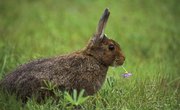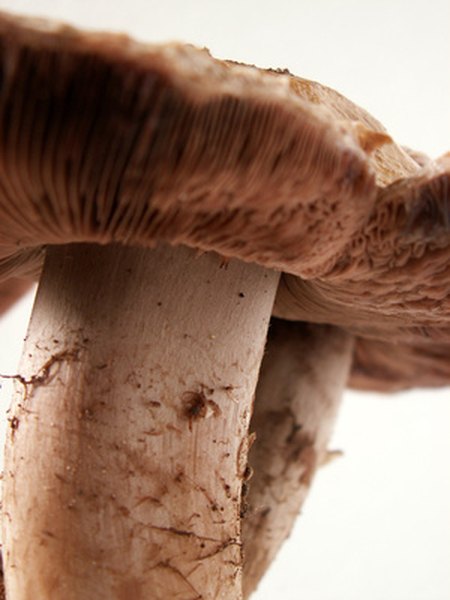
You cannot find fresher mushrooms than those you hunt and pick yourself, and the fresher they are, the better they taste. However, harvesting wild mushrooms has hazards, as many poisonous varieties closely resemble edible fungi. Even those with years of experience occasionally make a mistake, and this kind of mistake can make you very ill and potentially kill you, so use extreme caution when picking wild mushrooms.
Morels
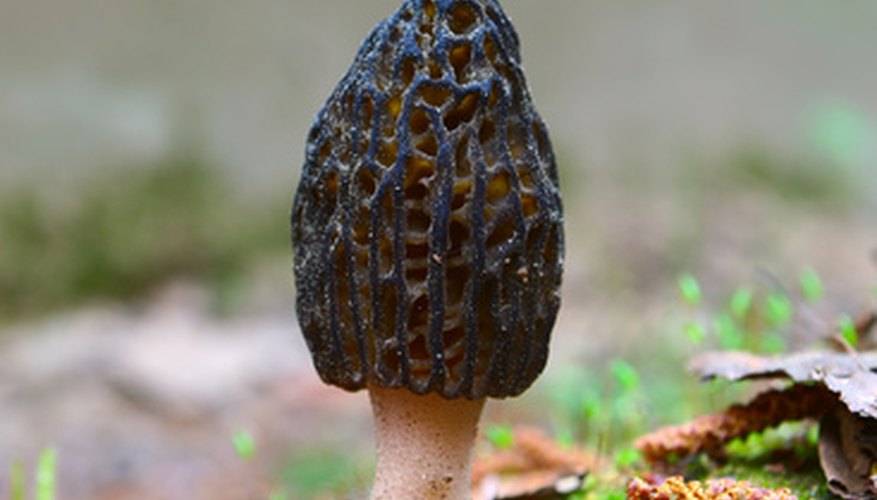
The mushroom morel image by Ludmila Galchenkova from Fotolia.com
Popular for their delicate flavor, morels are some of the more easily identified wild mushrooms in Oklahoma. Most mushroom hunters have their favorite collecting sites and refuse to share this information. However, you can find these fungi all over Oklahoma if you know where to look. Following spring showers, look for morels in hardwood forests, beneath cedars and even within briar patches. Oklahomans claim that the best time to hunt morels is when red bud trees open their blossoms.
Ear Mushrooms
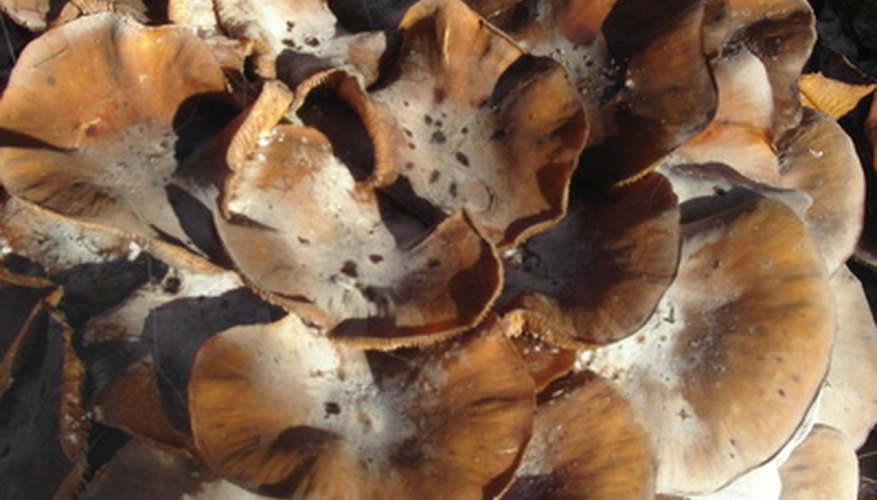
tree fungus image by pncphotos from Fotolia.com
A variety of ear mushroom found in Oklahoma called the Jew’s Ear Fungus is most prevalent in winter and spring, while the more common cloud ear mushrooms favor summer and fall. Both grow all over Oklahoma. You can find an assortment of various ear mushrooms throughout the year. Look for Jews Ear Fungi growing on dead alder trees and their fallen branches. Cloud ear mushrooms favor the same habitat, though you may also find them on living alders and occasionally growing from the trunks of various broadleaf trees.
Oyster Mushrooms

yellow oyster mushrooms image by TMLP from Fotolia.com
A favorite of mushroom hunters everywhere, oyster mushrooms are considered a delicacy. However, misidentifying is very easy and hazardous. Take any mushrooms you collect to an expert for positive identification. Coming in various colors with caps 2 to 8 inches wide, oyster mushrooms are common throughout North America and grow on dead or dying wood, either standing dead trees or fallen branches, particularly oak. They prefer a moist, cool climate. Therefore, autumn is the best time to search them out in Oklahoma, even though they will grow all year long in various regions.
Shaggy Mane
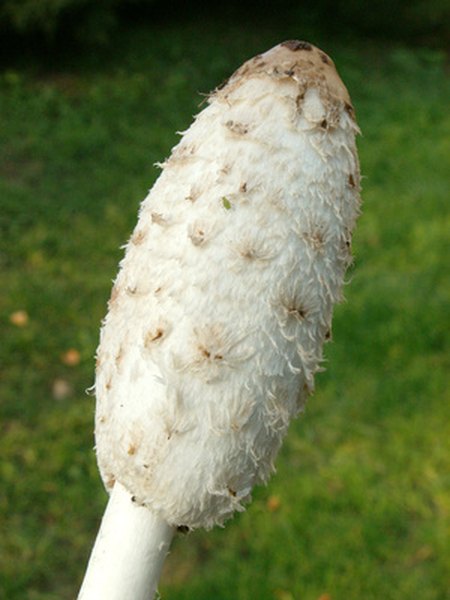
mushroom image by Henryk Olszewski from Fotolia.com
Although edible, few people seek out the shaggy mane because they do not freeze well, nor are they particularly tasty when cooked. If you eat a shaggy mane, eat it raw and fresh. This is also one of the more common wild mushrooms in Oklahoma, even found within towns and cities. You will find these hearty fungi along creek beds in autumn or spring, in scattered wood chips — such as those found in gardens — as well as growing out of grass or even hard-packed dirt. They tend to grow in large, short-lived clusters.
References
Writer Bio
Tom Wagner began writing for newspapers and magazines in the L.A. area in 2001. With articles appearing in "California Examiner," "World Reporter," the "Philippine Nurses Monitor" and "Famegate Global News," he currently writes for all three Philippine Media publications in Los Angeles, San Diego and Las Vegas. His articles focus on food, social issues, travel, sight-seeing, humor, general information, politics and medical matters.

